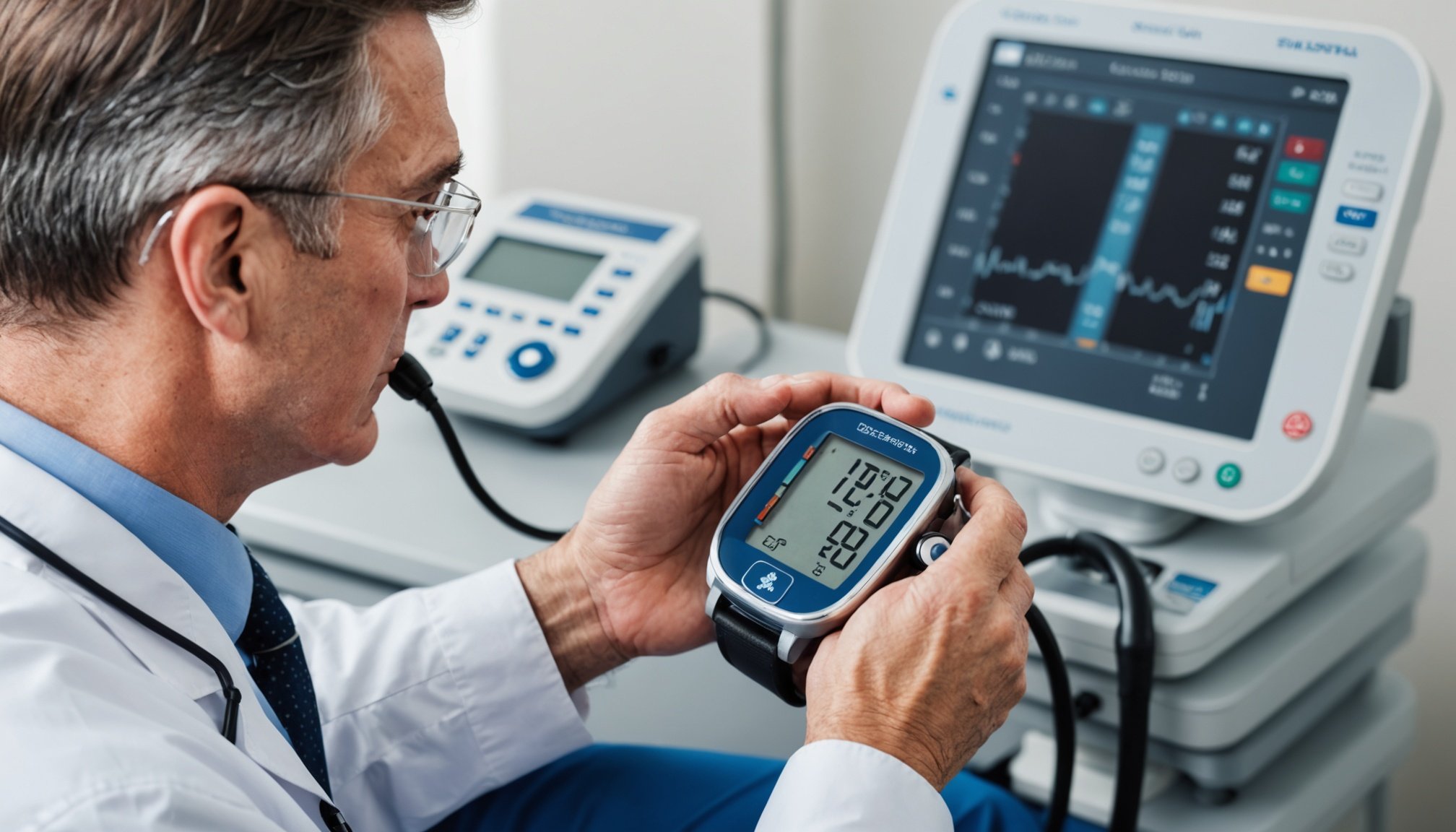Influence of Early Hypertension Screening on Long-Term Health Outcomes
Early hypertension screening plays a pivotal role in shaping health trajectories and can significantly enhance long-term health outcomes. By identifying elevated blood pressure at an early stage, individuals are better equipped to implement lifestyle changes and seek appropriate medical interventions, thereby reducing the risk of complications. This proactive approach is a cornerstone of preventive healthcare, aiming to stave off chronic diseases before they develop into more severe conditions.
Statistical analysis reveals that individuals who undergo early hypertension screening often experience better long-term health outcomes than those who do not. Detecting high blood pressure early allows for timely interventions that can lower the risk of heart disease, stroke, and kidney problems. These interventions can include lifestyle modifications such as diet and exercise, as well as medications if necessary.
This might interest you : Empowering Rural Health: The Role of Community-Based Solutions in Bridging Health Disparities
Furthermore, the impact on chronic disease prevention is substantial. By managing blood pressure levels early, the incidence of related chronic diseases can be reduced. Prevention of these conditions not only improves quality of life but also decreases healthcare costs in the long term.
Preventive healthcare measures such as early screening also help in the effective management of existing conditions. Individuals who regularly monitor their blood pressure are more likely to maintain optimal health, avoiding the development of more serious complications.
Also to discover : Exploring the Impact of the Mediterranean Diet on Inflammatory Markers in Autoimmune Disease Patients
Importance of Preventive Healthcare Strategies
Preventive healthcare is pivotal in maintaining and improving public health. Focusing on hypertension management, preventive healthcare involves proactive measures to identify and mitigate health risks before they escalate. This strategy not only enhances quality of life but also reduces healthcare costs associated with chronic diseases.
Definition and Scope of Preventive Healthcare
Preventive healthcare encompasses various approaches that aim to avert the onset of diseases. It includes vaccinations, screenings, health education, and lifestyle changes. The objective is to identify potential health issues early, thus reducing the likelihood of severe illness or complications. Critical to this are strategies that address crucial areas like hypertension management.
Role of Hypertension Screening in Preventive Health
Hypertension screening plays a significant role in public health strategies by early identification of individuals at risk. This allows for timely interventions such as lifestyle adjustments and medication. Regular screening is an essential component of preventive healthcare, aiming to control hypertension before it leads to more serious conditions.
Case Studies in Successful Preventive Strategies
Successful case studies highlight the effectiveness of public health strategies in reducing hypertension rates. Hypertension management through community-based programs demonstrates that accessible screenings and education can significantly lower blood pressure levels in populations. These studies underscore the importance of integrating preventive measures into healthcare systems to promote comprehensive health management.
Current Guidelines for Hypertension Screening
Regular screenings for hypertension are crucial, as early detection can improve management and outcomes. Hypertension screening guidelines highlight the importance of identifying at-risk individuals through tailored recommendations.
Review of Major Health Organization Recommendations
Leading health organizations have established clinical recommendations to guide professionals. The American Heart Association suggests beginning screenings at age 20, measuring elevated blood pressure levels during routine care. Similarly, the United States Preventive Services Task Force (USPSTF) recommends screening adults aged 18 and older. Understanding these various protocols helps practitioners maintain patient well-being.
Recommended Screening Intervals for Various Demographics
Screening frequency varies depending on age, risk factors, and previous health statuses. Young adults with normal blood pressure might be screened every two years, while those above 40 or at higher risk—such as individuals with a family history of hypertension, obesity, or diabetes—should consider annual checks. Adherence to these personalized schedules enhances early detection efforts.
Emerging Trends and Updates in Clinical Guidelines
Clinical guidelines for hypertension continue to evolve due to emerging trends and research advancements. Technological innovations, such as telemedicine and mobile monitoring, streamline screening processes and encourage more consistent evaluations. Additionally, there is a growing focus on integrating lifestyle assessments into hypertension management, reflecting a broader understanding of cardiovascular health.
Screening Methods and Technologies
Screening for hypertension is crucial for early detection and management. With the advent of various hypertension screening methods, the landscape is rapidly evolving, offering a host of innovative solutions.
Traditional vs. Modern Screening Techniques
Traditional blood pressure screening often involves a cuff and stethoscope used by healthcare professionals. However, in recent years, modern blood pressure monitors have become more prevalent. These digital devices offer accuracy and ease-of-use, allowing individuals to monitor their blood pressure without needing medical training. While both methods provide valuable data, digital monitors are more convenient and user-friendly, promoting more frequent checking, which is key to managing hypertension effectively.
Home Monitoring vs. Clinical Screening
The debate between home monitoring and clinical screening focuses on convenience versus precision. Home monitoring offers individuals the ability to measure their blood pressure at various times during the day, in a stress-free environment, which may reflect a more accurate portrayal of one’s usual blood pressure. Meanwhile, clinical screening provides precision under professional supervision. Both methodologies contribute significantly to hypertension management, but the choice often depends on the individual’s needs and lifestyle.
Future Technologies in Hypertension Detection
Emerging technologies promise to revolutionise hypertension detection. Continuous monitoring devices and wearable tech are at the forefront, offering real-time data collection and analysis. These innovative screening technologies have the potential to enhance early detection and personalised treatment strategies, paving the way for a healthier future.
Evidence-Based Benefits of Early Detection
Detecting hypertension early can significantly improve health outcomes. Numerous key studies illustrate the benefits of early detection. By identifying hypertension at an initial stage, patients can adapt their lifestyles, possibly eliminating the progression to more severe conditions. Early intervention allows for regular monitoring and management, potentially reversing the course of the disease.
Interventions such as dietary changes, exercise, or medication prescribed in a timely manner can help mitigate complications. For instance, reducing the chances of stroke, kidney damage, or heart disease becomes more achievable. Successfully managing hypertension early can also lessen the risk of complications as patients age.
Besides health improvements, the economic implications of early detection are substantial. Treatments, hospitalisations, and ongoing care for advanced hypertension or related conditions incur significant expenses. By addressing hypertension early, not only are severe health issues prevented, but costs related to complex treatments are also reduced.
In summary, the benefits of early detection manifest not only in physical wellness but also in enhanced economic efficiency. Intervention at an early stage is crucial in the quest for lasting positive health outcomes and societal cost savings.
Expert Opinions on Hypertension Screening
In recent years, expert insights have significantly shaped the understanding and management of hypertension. Leading healthcare professionals emphasize the importance of early detection and strategic hypertension management. According to many specialists, effective screening can prevent serious cardiovascular outcomes.
Prominent healthcare experts advocate for a collaborative approach. This involves a diverse team including cardiologists, general practitioners, and endocrinologists. They collectively work to optimize screening protocols, ensuring early intervention strategies are robust and well-coordinated. This team-focused perspective contributes to more precise diagnoses and effective treatment plans.
Personal anecdotes from professionals in the field provide valuable insights. For instance, a renowned cardiologist recalls a scenario where early hypertension screening identified unusually high blood pressure levels in a young patient. This led to timely intervention, preventing potential long-term health issues. Such experiences underscore the importance of alertness and responsiveness in hypertension screening.
These healthcare professionals bring authority and experience to hypertension management discussions, advocating for stringent screening guidelines and proactive patient engagement. Their insights underscore the critical role expert collaboration and practical experiences play in shaping effective healthcare strategies. Through leveraging diverse expertise, the goal remains clear: to improve patient outcomes and advance the field of hypertension management.
Statistical Overview of Hypertension Prevalence
Understanding the Hypertension Prevalence Statistics offers valuable insights into global health patterns. Currently, studies indicate that hypertension affects approximately one in three adults worldwide. This concerning trend highlights the urgent need for effective preventive strategies and interventions. As we delve deeper into these statistics, we examine how different demographics experience varying rates of hypertension.
In analysing the Demographic Analysis, it becomes evident that factors such as age, race, and socioeconomic status significantly influence hypertension rates. For example, the prevalence is generally higher among older populations, as the likelihood of developing hypertension increases with age. Additionally, certain ethnic groups, such as African-Americans, experience higher rates of hypertension compared to other racial backgrounds. Socioeconomic factors, including education and income level, also play a pivotal role, with lower socioeconomic status often correlating with higher hypertension rates.
Exploring Health Trends over recent decades reveals a gradual increase in hypertension prevalence. Factors contributing to this rise include urbanisation, dietary changes, and sedentary lifestyles. However, some regions have seen improvements due to enhanced public health measures and increased awareness. Understanding these trends is crucial for developing targeted interventions aimed at reducing hypertension and promoting healthier populations worldwide.
Implications for Future Research and Policy
Exploring Future Research Directions is crucial in advancing our understanding of hypertension and improving Health Policy Implications. Identifying Knowledge Gaps will guide research efforts to focus on areas yet to be comprehensively studied. Current understanding points towards the need for more data on genetic predispositions and lifestyle factors in various demographics, which could significantly refine Hypertension Prevention Strategies.
Identifying Knowledge Gaps
Despite significant progress, certain areas remain under-researched. Expanding studies on genetic predispositions and environmental effects can unlock personalized Hypertension Prevention Strategies. Focusing on these aspects will address disparities in treatment outcomes and contribute to more equitable health interventions.
Policy Recommendations for Screening Implementation
Policymakers play a pivotal role in enhancing hypertension management. By improving access to screening, the healthcare system can better identify risk groups. Recommendations include making screenings more affordable and accessible, especially in underserved communities. Implementing these measures will support early detection and management of hypertension.
The Role of Research in Shaping Hypertension Management
Ongoing research contributes significantly to Hypertension Care Advancements. As new findings emerge, they inform and reshape health policies, enhancing the effectiveness of prevention strategies. Continued investment in research is essential for developing innovative treatments and maintaining momentum in the fight against hypertension.











